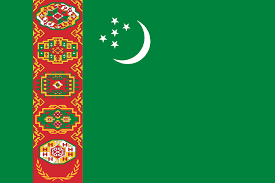Language/Turkmen/Grammar/Forming-Questions
| ◀️ Question Words — Previous Lesson | Next Lesson — Modes of Transportation ▶️ |
In this lesson, we will explore how to form questions in Turkmen. Asking questions is a crucial skill to master when learning any language, as it enables you to engage in dialogue with native speakers and gather important information. We will cover the different types of questions, including yes/no questions and open-ended questions. Along the way, we will also introduce cultural information and interesting facts about the Turkmen language and Turkmenistan!
Consider broadening your understanding by checking out these related lessons: Question particle–my mi & Pronouns.
Types of Questions in Turkmen
There are two main types of questions in Turkmen: yes/no questions and open-ended questions. We will discuss each type in detail, along with examples to help you better understand and apply the concepts.
Yes/No Questions
In Turkmen, yes/no questions are formed by adding the particle "-mi/-mı/-mu/-mü" to the end of the verb, depending on its vowel harmony. This simple addition turns a statement into a question that can be answered with either “yes” (hawa) or “no” (ýok).
Examples:
| Turkmen | Pronunciation | English |
|---|---|---|
| Sen gelýärsiň. | Sen gel-yar-sing | You are coming. |
| Sen gelýärsiňmi? | Sen gel-yar-sing-mi? | Are you coming? |
| Ol iýýär. | Ol i-yar | He eats. |
| Ol iýýärmı? | Ol i-yar-my? | Does he eat? |
Remember that the "-mi/-mı/-mu/-mü" particle should follow the verb and agree in vowel harmony.
Open-Ended Questions
Open-ended questions in Turkmen are formed using question words, such as "who," "what," "where," "when," "why," and "how." These question words allow for more detailed and informative responses, as opposed to simple yes/no answers.
We previously covered question words in the lesson "Turkmen Grammar → Question Words." As a quick reminder, here are some common question words in Turkmen:
- who: kim
- what: näme
- where: nirede
- when: haçan
- why: neden
- how: nädip
- how many: näçe
When forming open-ended questions, the question word is generally placed at the beginning of the sentence.
Examples:
| Turkmen | Pronunciation | English |
|---|---|---|
| Kim gelýär? | Kim gel-yar? | Who is coming? |
| Näme iýýärsiň? | Näme i-yar-sing? | What are you eating? |
| Nirede ýaşaýarsyň? | Nire-de ya-sha-yar-sing? | Where do you live? |
| Haçan gitjekmi? | Ha-chan git-jek-mi? | When are we going? |
Keep in mind that sentence structure may change depending on the information being asked, but generally, the question word will be at the start of the sentence.
- Üýtgeş! Trivia: Turkmenistan is located in Central Asia and is bordered by Kazakhstan, Uzbekistan, Afghanistan, and Iran. The majority of Turkmen people are Sunni Muslim, and Turkmen is the official language of the country.*
Forming Negative Questions
To form negative questions in Turkmen, we need to add the negation word "däl" after the subject pronoun and before the verb, along with the question particle "-mi/-mı/-mu/-mü" at the end of the verb. This turns the question into its negative form, asking for confirmation of something not happening.
Examples:
| Turkmen | Pronunciation | English |
|---|---|---|
| Sen däl gelýärsiňmi? | Sen dal gel-yar-sing-mi? | Aren't you coming? |
| Ol däl iýýärmı? | Ol dal i-yar-my? | Doesn't he eat? |
Combining Question Words and Yes/No Questions
In some cases, you may need to ask a more complex question that combines both the question word and the yes/no question particle in the same sentence. In these cases, simply use the question word at the beginning of the sentence and add the question particle to the verb as usual.
Examples:
| Turkmen | Pronunciation | English |
|---|---|---|
| Näme ugrukda ýörüýärsiňmi? | Näme ugruk-da yor-yar-sing-mi? | Are you walking in which direction? |
| Haçan geljekmi? | Ha-chan gel-jek-mi? | When will he come? |
Repetition and practice are key to mastering the skill of forming questions in Turkmen. It is also essential to be exposed to authentic language situations, as it helps to solidify these concepts and understand the context in which they are useful. Happy learning!
Other Lessons
- Give your Opinion
- Plurals
- Negation
- Basic Verb Conjugation
- Question Words
- To have
- Ordinal Numbers
- Word order
- Some Continous Moods
Sources
| ◀️ Question Words — Previous Lesson | Next Lesson — Modes of Transportation ▶️ |

